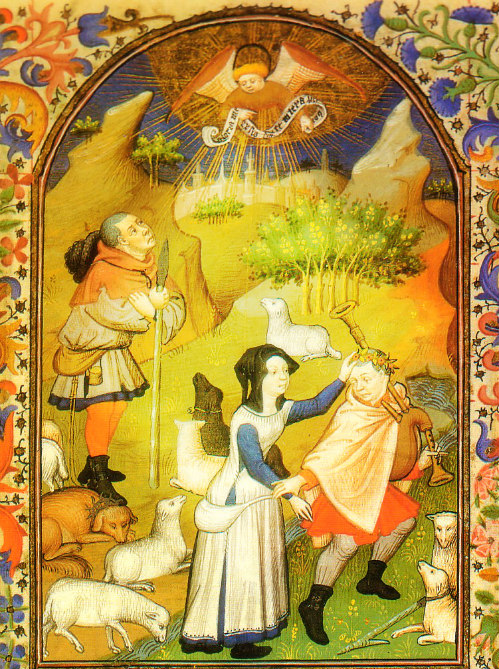The Book of Hours
"Hours of Our Lady should be mine,
Fitting for a noble dame,
Of lofty lineage and name;
Wrought most cunningly and quaint,
In gold and richest azure paint.
Rare covering of cloth of gold
Full daintily it shall enfold,
Or, open to the view exposed,
Two golden clasps to keep it closed."
In Medieval times book illumination materials were extremely costly, and included ground up precious stones and gold and silver leaf. The labour involved was tremendous and illustrated manuscripts often took years and sometimes decades to complete. Only the rich and powerful could afford to purchase such masterpieces. The best illuminators, such as the Limbourg Brothers, were celebrities, highly sought after. They received sumptuous gifts and money from their royal patrons. Amazingly the vivid and dazzling colors have not changed with time.

Require more facts and information about Manuscript Illumination? Poke around every nook and cranny of the known universe for information this subject. Search Here
© HistoryofPainters.com If you like this page and wish to share it, you are welcome to link to it, with our thanks
The Meaning of Sacred Symbols in Paintings. Most prominently featured symbols and their meaning:
- The Serpent
- Good Shepherd
- Key
- Wheat
- Virgin Mary
- Christ
- The Anchor
- The Apostles
- Satan
- Chalice
- The Cross
- Fruit
- The Saints
- Colors
- Book
- Birds
- Angels
- Insects
- Fish
- Spider
- Animals
- Household Objects
If you feel you have worthwhile information you would like to
contribute we would love to hear from you. We collect essential
biographical information and artist quotes from folks all over the
globe and appreciate your participation. When submitting please, if
possible, site the source and provide English translation. Email to
millardmulch@gmail.com